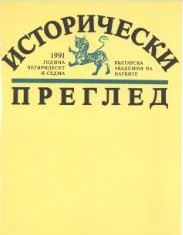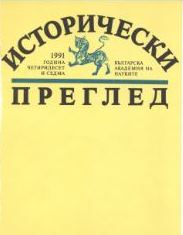
We kindly inform you that, as long as the subject affiliation of our 300.000+ articles is in progress, you might get unsufficient or no results on your third level or second level search. In this case, please broaden your search criteria.












During the 1990s, informal trade – or šverc - was widespread in the former Yugoslav rump state. The following article conceptualizes the mechanisms behind the establishment of informal markets in light of ‘legal failure’ in Novi Pazar, Serbia, where informality produced an alternative, transnational connotation of belonging, leading to a ‘competition between law and social norms’. Trading thus served the purpose of a safety net that generated new and renewed social ties with the diaspora in Turkey, and the Turkish state writ large.
More...
The current conflict in Ukraine and the troubled course of its relations with Russia since declaring independence in 1991 has encouraged speculation and misinformation about the longer history of their relationship. These two new books by leading historian of Ukrainian and Russian history provide last chapters with informed accounts of relations since 1991. Their primary concerns and the bulk of their books are devoted to the much longer histories and complex relations from the Tsarist centuries through the Soviet period
More...
The paper elucidates the development of a medieval city from a border fortification and caravan station to an important economic, administrative and judicial seat. Through the analysis of sources and field survey, it is ascertained that in addition to the palace, i.e. the Upper Town, the Lower Town in Višegrad was also fortified, which largely changes the notion about the settlement, life of its inhabitants and the origin of the name Višegrad. Based on Ottoman sources, the military garrison, urban changes and division into mahallas, and the religious structure and dynamics of the population are shown. A focus is also placed on economic activities, particularly mass viticulture.
More...
The paper deals with the demarcation process between the Principality of Serbia and the Ottoman Empire from 1830 until 1834. All activities of examining and measuring the land with the aim to draw the exact future border, have been presented in detail. The borderline was based on the line held by the Serbian rebels in 1812. The role of the Russian officers in the demarcation process has also been highlighted, as well as the work of the commission on drawing the final Serbian-Turkish border in 1834. The final part of the paper elaborates on determination of the borders of the nahiyes, which formed a part of socalled “torn-off lands”, i.e. the territories that became part of the Principality of Serbia after the demarcation. The statistical data on population in these nahiyes have also been given.
More...
The cruelty of the Ottoman authorities during the suppression of the Ilinden Uprising caused revolt and protests of the European public opinion, especially of the British public opinion. Because of that and because of the existing danger from a Bulgarian – Ottoman war, an opportunity for the Great Powers to take action was created that involved new reform suggestions which ultimately ended with the Murzsteg Reform Program. Great Britain also had its own suggestions, such as a Christian governor who would not have been connected with any of the countries that signed the Berlin Agreement, or a Muslim governor aided by European assistants. The financial and judicial aspects of the Murzsteg Reform Program were also important for the British foreign policy and some of their suggestions were ultimately implemented.
More...
The paper analyzes the implementation of the General Framework Agreement for Peace in Bosnia and Herzegovina and highlights the dificulties along the way. The author detected a different reception of the content, messages and implications of certain provisions and imperatives of the Peace Agreement in BiH with the former belligerent parties in the civil war in BiH, ie. among the legitimate representatives of the three constituent peoples in BiH, who are the bearers of its constitution and the entire architecture on which is based the Dayton BiH. By analyzing several annexes of the Dayton Peace Agreement, e.g. of Annexes lV, Vll and Vlll, the author showed that the norms from those annexes have one semantics within the Serbian national corpus, the other (different one) at Bosniaks, while at Croats it is perceived in a third way. As a result of that, and some other contents, i.e. obstruction of the implementation of the Dayton Peace Agreement, it has not been implemented to the end, nor is that end in sight soon.
More...
The paper deals with the development of Czech medieval studies on ecclesiastical and religious history, with a focus on the study of the history of medieval Benedictine monasticism. The author sketches the historiography of his subject since the emergence of critical Czech historiography during the 19th century and points out the problems that such a profiled study had to face between 1948 and 1989 under the dominance of Marxist-orchestrated historiography. The bulk of the paper then presents an outline of the development in the field of study after the fall of the communist regime, i.e. in the years 1990—2018.
More...